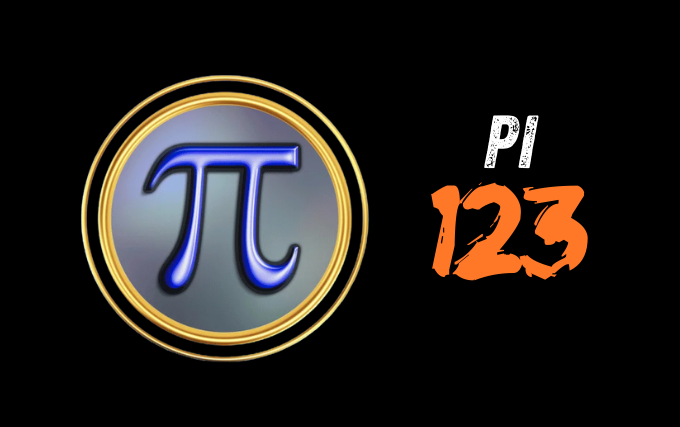Numbers and symbols frequently have important meanings in the fields of mathematics and technology. One such phrase that has gained popularity recently is “pi123.” Pi123 is important in many fields, including mathematics, computer science, economics, and engineering, even though it may not be as well-known as the well-known mathematical constant π (pi). This article examines the idea of pi123, its possible uses, and its function in several domains.
Understanding pi123 in Mathematics
Despite not being an officially acknowledged mathematical constant, pi123 is frequently used in theoretical and computational contexts. Pi123 is a notation used by some mathematicians and researchers to denote particular calculations, sequences, or even algorithms that use the number pi in conjunction with other factors.
Pi123 and Computational Mathematics
Pi is a crucial number in many mathematical calculations since it is irrational and has an endless number of decimal places. A computational model that refines the estimate of pi to a given number of decimal places, maybe 123, might be referred to as pi123. High-accuracy scientific computations, engineering applications, and cryptographic protocols all depend on this degree of accuracy.
Pi123 in Number Theory
Sequences and patterns are essential to comprehending numerical relationships in number theory. A sequence produced from pi or associated with a particular formula involving the constant could be represented by the symbol pi123. It can be used as a benchmark in iterative computations or as a component of a more comprehensive mathematical model that investigates infinite series, prime numbers, or fractals.
Applications of pi123 in Computer Science
Pi123 in Algorithmic Design
In the computer sciences, algorithms are essential, and pi123 can be a reference to an algorithm that improves mathematical calculation accuracy. It could entail error minimization procedures, random number generation, or approximation techniques that are essential for numerical methods and computer simulations.
Cryptography and Security
High-precision numbers are employed in cryptography to provide safe encryption schemes. Pi123 may be helpful in the creation of cryptographic keys if it denotes a number or sequence that is generated from pi with 123 decimal places. Pi123 is a potential instrument in the field of secure encryption, which depends on huge prime numbers and accurate computations.
Machine Learning and Artificial Intelligence
Complex calculations are essential to the fields of machine learning and artificial intelligence (AI). Pi123 may be utilized in data analysis methods, neural networks, or deep learning models if it is linked to a mathematical sequence. Since optimization methods sometimes involve mathematical constants, pi123 may be useful in AI research.
Financial and Economic Implications of pi123
Financial Modeling and Risk Analysis
To forecast market trends and evaluate risks, financial models rely on accurate computations. Pi123 could be used in financial engineering, risk analysis, and economic forecasting if it represents a mathematical sequence with great accuracy. Pi123 may help increase accuracy in complex financial instruments like derivatives, which frequently call for exact computational models.
Stock Market Analysis
Large volumes of data are processed in algorithmic trading and stock market analysis. Pi123 might be a crucial component of a model that improves automated trading tactics, volatility analysis, or stock price prediction. Traders and investors that depend on quantitative analysis may gain if pi123 is utilized to increase numerical precision.
Engineering and Scientific Applications
Structural Engineering
In structural engineering, where mathematical computations guarantee the security and stability of structures like buildings, bridges, and other infrastructures, accuracy is essential. Pi123 may be used in computer models that need extremely precise measurements, like load distribution, stress analysis, and material property evaluation.
Aerospace and Space Exploration
Precision is crucial in space exploration and aerospace engineering. Pi123 could be a notation for a more accurate approximation of pi utilized in scientific simulations, whether it is used for navigation system development, spacecraft trajectory design, or gravitational interaction calculations. This degree of precision guarantees both effective fuel consumption calculations and successful space flights.
Medical and Biological Research Applications
Medical Imaging and Data Analysis
In order to recreate images, medical imaging technology like CT and MRI scans depend on exact mathematical methods. Pi123 can be a numerical method for boosting resolution, refining image processing methods, and guaranteeing precise diagnosis.
Genomic and Computational Biology
Large-scale genomic data in bioinformatics necessitates computational precision. Pi123 may be applied to protein structure prediction, mutation detection, or sequence alignment. As the analysis of biological data grows more computationally intensive, sophisticated numerical approximations such as pi123 could lead to important breakthroughs.
Challenges and Future Prospects of pi123
Challenges in Standardization
Pi123’s lack of uniformity in the fields of computational sciences and mainstream mathematics is one of its fundamental problems. Although it might be useful in some specific domains, experts need to agree on its definition and applications.
Potential for Future Research
High-precision computations will become more and more necessary as computing power increases. Pi123 may gain recognition as a numerical concept in domains like data security, artificial intelligence, and quantum computing that demand a high degree of accuracy.
Conclusion
Pi123 is still a fascinating phrase with possible uses in computer science, mathematics, engineering, economics, and medical research. Its relevance keeps changing, regardless of whether it represents a sophisticated computer model, a cryptographic sequence, or an improved approximation of pi. Pi123 may become increasingly well-known as research advances, strengthening its position in a variety of scientific and technological domains.

